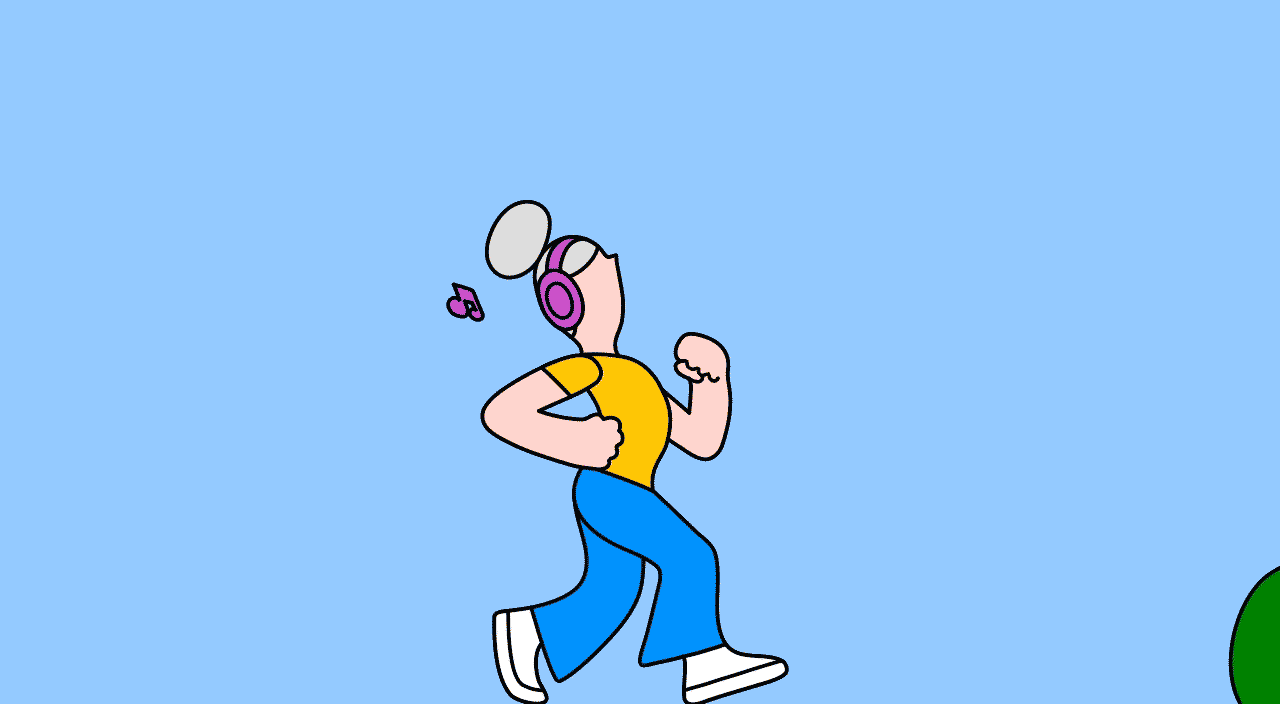Few would argue that walking isn’t a simple, effective way to get some low-impact exercise. In fact, doctors regularly suggest this activity as a way to reduce stress, ward off aging diseases and move the scale down a few notches. The question is, are you actually getting the maximum benefit out of the walking you do? The answer is no if you are making any of these six missteps.
You always walk at the same pace.
While we absolutely applaud you for strapping on those sneakers and hitting the pavement, you probably need to pay more attention to your speed. Researchers at Ohio State University found that walkers who varied their pace burned 20 percent more calories than those who kept a constant speed. The very act of changing your speed burns energy, according to the study’s author.
What’s a good pattern to vary your walking pace? Leslie Sansone, creator of the Walk at Home Workouts and author of Walk Away the Pounds, says to always begin with a warm-up pace for two minutes, switch to a brisk pace for the next two minutes and then jog for 30 seconds, repeating the pattern for 20 minutes. Do a cool-down walk to bring your heart rate back down, she says. How brisk is brisk? Fitness pros say 100 steps per minute (3 to 3.5 miles per hour) meets the definition and should leave you sweating and your heart beating faster. Here’s a not-so-fun factoid: Although men and women walk at about the same speed when they are in their 20s, once women hit their 60s, their walking speed declines considerably, according to Healthline.
You avoid the hills.
Yeah, we’ve got your number on this one, don’t we? Hills are the bane of many walkers’ routes. We avoid them like the plague because they leave us with sore muscles and cause us to breathe harder and faster. But while any walk is better than none, to get the maximum benefit from this low-impact activity, think of those neighborhood hills as your new BFF. To help this budding relationship grow, consider that the National Institutes of Health says you burn 30 percent more calories when you walk on uneven terrain. OK, but what if you live on Filbert Street in San Francisco or Canton Avenue in Pittsburgh and really can’t handle those hills? Try climbing stairs or walking on a sandy beach—both qualify as uneven terrain.
You forget about your arms.
Are you guilty of walking with dangling arms? Or, worse yet, holding a cellphone up to your ear? The more muscle groups you engage, the better, so bend your arms at a 90-degree angle and fist-pump the sky as you walk, MyFitnessPal recommends. According to the American Council on Exercise, involving your arms while you stride can boost your heart rate up to 10 beats per minute and increase oxygen consumption between 5 and 15 percent, adding to the number of calories burned during a workout.
You also forget about your tummy.
What makes a walk an honest-to-goodness fitness activity? It has less to do with your feet—even your arms—and a lot more to what MyFitnessPal calls a tummy tuck. It’s the “belly button–to-spine” action that will “make your walk more effective, protect your back and get your abs in on the action,” the health website explains. The pros say to suck in your belly toward your spine as you walk, which will engage your core.
You don’t walk to music.
Strolling alone in the wilderness and absorbing the sounds of nature is an amazing experience. Unfortunately, it’s an unlikely motivator for powering up your walk. Listen to music instead, with the goal of trying to distract yourself from any monotony or misery you may be experiencing. Make a playlist to match your walking tempo, and keep increasing to faster-paced music. Researchers found that songs with 170 to 190 beats per minute generate the best results.
You think that walking poles are silly—or remind you of canes.
Process this: A recent study found that walkers who completed a 1-mile route with poles burned more calories than walking the same course without poles. And the benefits don’t stop there. Walking sticks provide additional stability for aging activity seekers. Quality walking can provide balance, absorb shock to joints and assist movement over various terrains. So why are you still sitting there? Get moving, folks!
Enjoying The Ethel? Then no doubt you’ll also enjoy all the benefits that AARP membership has to offer.

Filip Frölich


